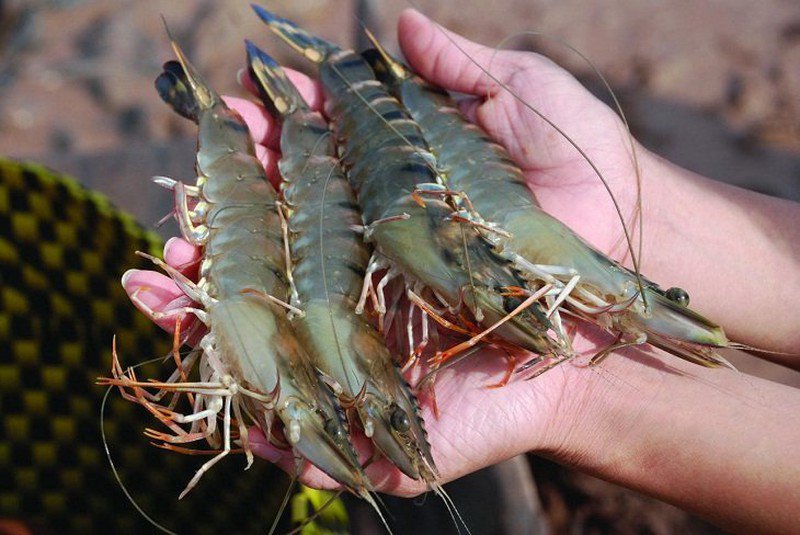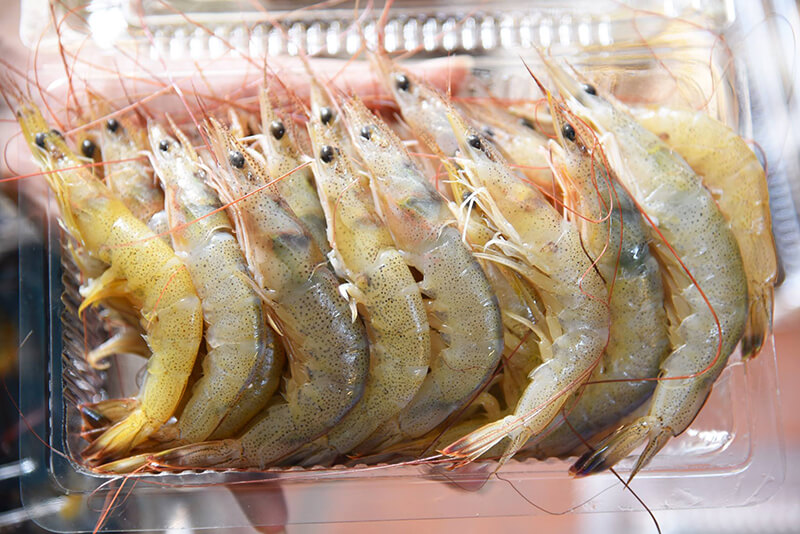Shrimp is a nutritious and popular delicacy, but its high price tag often leads to unscrupulous sellers injecting it with fillers to increase weight and profits. Be cautious when buying shrimp and avoid these five types to save money and protect your family’s health.
Shrimp to Avoid
+ Blackened heads and tails: Despite the temptation to save money, avoid shrimp with black spots or discolored heads and tails. This is a sign of decay, indicating the shrimp has been dead for a long time. The insides have deteriorated, resulting in a strong, unpleasant odor that is difficult to remove. Even thorough washing might not eliminate the risk of foodborne illness.

+ Missing heads and tails: Don’t assume that missing heads and tails are normal. Fresh shrimp have heads and bodies firmly attached. Loose or broken connections indicate the shrimp is no longer fresh, affecting both its appearance and taste. The meat will be dry and lack flavor.
+ Straight shrimp: Fresh shrimp tend to curl due to muscle contractions. Straight shrimp have likely been dead for several days or previously frozen, causing their muscles to relax and straighten. The longer they remain dead, the more their muscle structure breaks down, making it impossible for them to curl.
+ Frozen shrimp: Be wary of oversized shrimp that rely on ice to maintain their size. As the ice melts, the shrimp will shrink significantly, and their flesh may be compromised. They might have been frozen for too long or thawed and refrozen during transport, damaging the meat.
+ Soft-shelled shrimp: A batch of soft-shelled shrimp is a red flag. While a few soft-shelled shrimp in a batch are normal, a high percentage indicates they’ve been fed hormones to accelerate growth. This results in soft, spongy meat with inferior taste and potential health risks.
Tips for Storing Fresh and Delicious Shrimp

Firstly, opt for live shrimp, trim their whiskers, and thoroughly clean them before storing. Once they’re dry, place them in a food container and sprinkle with a small amount of white sugar. Shake well and store in a freezer or deep freezer to maintain low temperatures. When ready to cook, simply take out the desired amount.
Note: It’s best not to store shrimp for extended periods (ideally less than 30 days) to prevent nutrient loss.
Buying shrimps: Should they be curved or straight? Insider tips for choosing the freshest and most delicious shrimp, don’t miss out on this crucial detail.
Shrimp is a popular and nutritious food, with high economic value. However, if you don’t pay attention to the type of shrimp you choose, it can be harmful to your health. Many shrimp on the market are contaminated with harmful chemicals and antibiotics that can pose serious risks to consumers. Therefore, it is important to be knowledgeable about the different types of shrimp and how to ensure their safety. In this guide, we will provide you with valuable information on selecting and preparing shrimp to enjoy a delicious and healthy meal.






































